1996/01/01
103. zenbakia

eu es fr en cat gl
Aparecerá un contenido traducido automáticamente. ¿Deseas continuar?
Un contenu traduit automatiquement apparaîtra. Voulez-vous continuer?
An automatically translated content item will be displayed. Do you want to continue?
Apareixerà un contingut traduït automàticament. Vols continuar?
Aparecerá un contido traducido automaticamente. ¿Desexas continuar?
Mathematics and Nature
Text created by automatic translator Elia and has not been subsequently revised by translators.
Elia Elhuyar

Curve: Curve: Line that changes course without cuts. The river Aguas Tuertas de Huesca suggests us well the concept of curve.
X. Artola Artola
It may be surprising to see that the forms generated by nature are very similar to those studied in mathematics. Mathematicians are not so curious. In fact, solutions to problems that are frequently resolved are the simplest, as the ways nature seeks to advance are the simplest. On the other hand, nature has been a source of inspiration for artists, writers, scientists, etc. Thus, human beings have often used nature to reflect their inventions. Logically, the forms created by nature have been attractive to the human being, and their analyses have been frequent.
To show this similarity, we have brought here photographs of some of the forms that nature offers, and we have represented beside them maternal objects that suggest these forms. In addition, a brief explanation of the image and the image will be shown. But the images are more important than the text.

ParismasPrisma: Three-dimensional body formed by two polygons equal, superior and inferior, with as many parallelograms as sides. As shown in the photo on the left, in the basaltic structure of the Irish Giants Causeway you can see hexagonal prisms.
X. Artola Artola
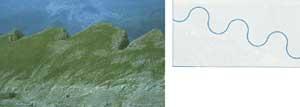
Sinusoidea: Any curve in the form of sinuous or trigonometric cosine. (Photo: X. Artola).
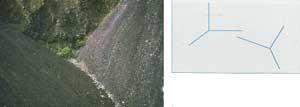
TriedroTriedro: System formed by three straight lines that are cut into a point.
X. Artola Artola

Circumferences Circumferences: In a plane, a line formed by points located at the same distance from a point (center). Leaving the camera watching the North star for 40 minutes, the other stars describe circles. This effect is due to the rotation of the earth. (Photo: X. Artola).
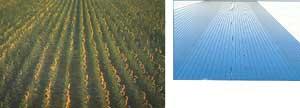
Perspective: Perspective: Shape and position of objects from a point of view.
X. Artola Artola
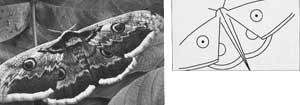
Symmetry: Symmetry: Correspondence of position of a set with respect to a point, straight or flat. If we represent a straight line along the body of the butterfly, the left wing is symmetrical to the right.
X. Artola Artola
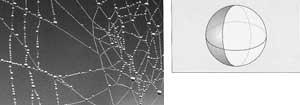
Sphere: Space surface. From a point, from the center, at the same distance. The simplest structure that captures water is the sphere.
X. Artola Artola

Cone: Cone: Surface of the space, formed by lines that pass through a fixed point (vertex) and a curve (corrector). Cone trunk: if the cone is removed a piece around the vertex a cone trunk will be obtained. As can be seen in the image on the left, the Japanese volcano Fuji has a cone trunk shape. (Photo: X. Artola).
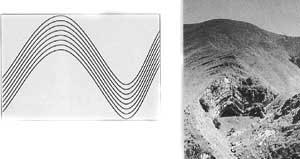
Curved lot: Set of curves that are obtained by modifying the values of a parameter.In the cave of Errozate you can observe well the set of curves that form the rocks.















